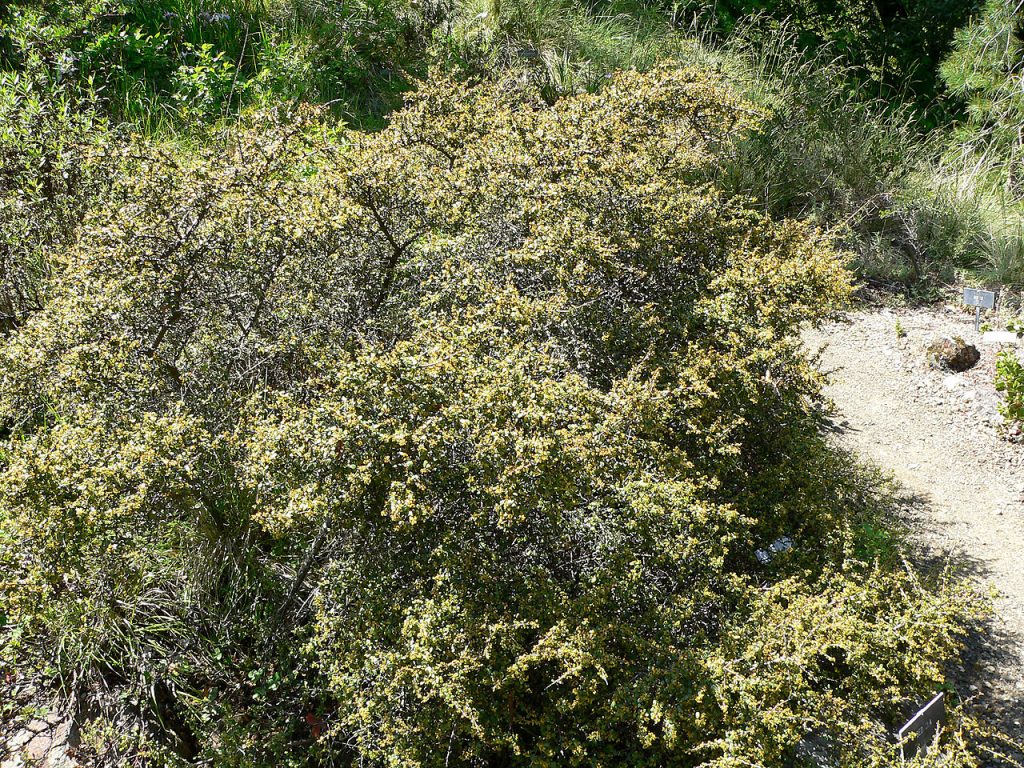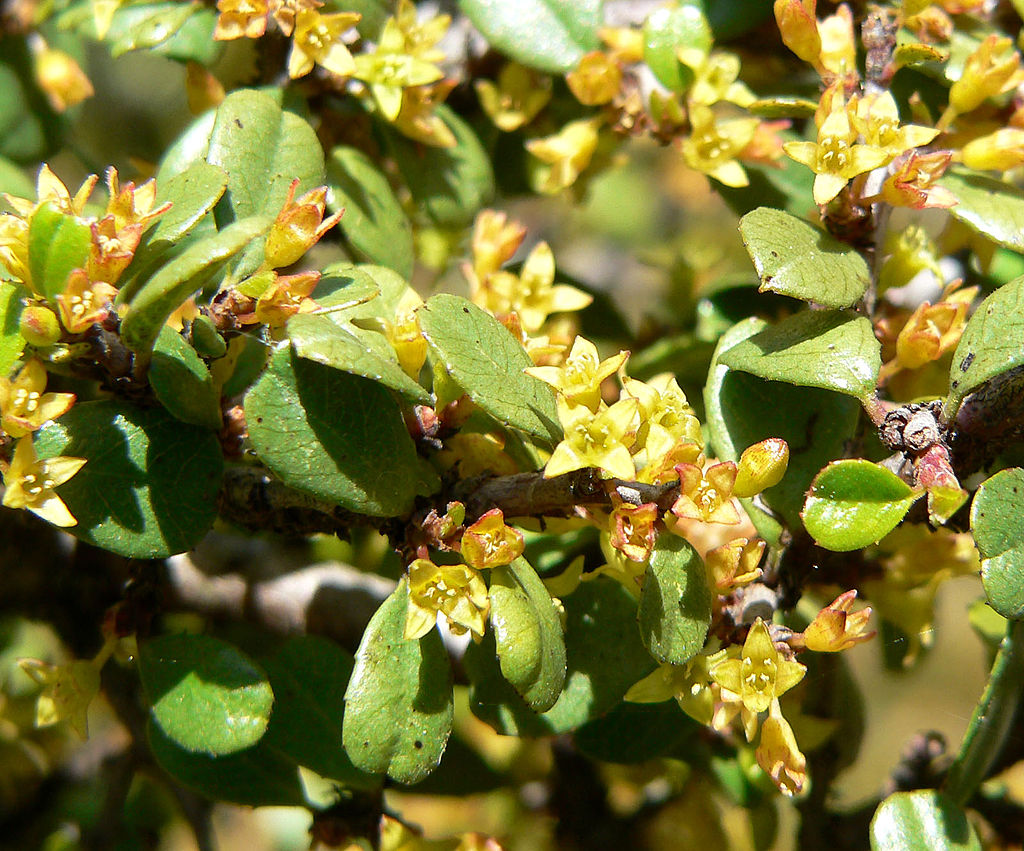
Also called hollyleaf buckthorn, this evergreen shrub is native to Baja California, California and Arizona, where it grows in dry washes and canyons in coastal sage scrub, chaparral, and various woodlands. It is a member of the buckthorn family, Rhamnaceae, that also includes California lilac, jujube tree, and crown of thorns. The shrub grows 4-6′ tall and has multiple branches, some tipped with thorns. The tiny glossy, round leaves are dark green on top and brown or yellow on the underside. In spring, clusters of 1-6 inconspicuous, whitish-green, male and female flowers appear but under stress the plant may produce only male flowers. The fruit is an edible, pea-sized, red berry that is attractive to birds and is said to give a red tinge to people who eat it in large quantities. The plant serves as a larval food source for Hermes copper and pale tiger swallowtail butterflies, and western tussock moth. Tolerant of pruning and drought, the shrub is useful as a hedge and for erosion control. The genus name, Rhamnus, comes from the ancient Greek word ῥάμνος (rhámnos) referring to various prickly shrubs. The specific epithet, crocea, is the Latin word meaning saffron-colored. Photo Credit Stan Shebs Wikipedia Commons

Type: Evergreen shrub
Form: Mound
Outstanding Feature: Berries
Growth Rate: Moderate to slow
Bloom: Clusters of 1-6 inconspicuous whitish green flowers in spring
Size: 4-6′ H x 8′ W
Light: Full sun in cooler areas, sun with afternoon shade in hotter areas
Soil: Sandy to clay, dry to medium moist, well drained
Hardiness: Zones 9-11
Care: Prune to shape in winter after berries disappear
Pests and Diseases: None of significance
Propagation: Seed
Outstanding Selections: None
Photo Credit Stan Shebs Wikipedia Commons